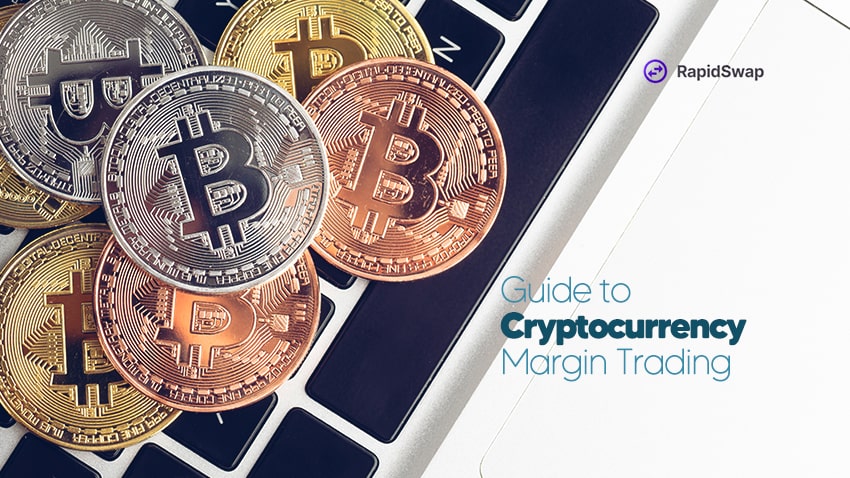Margin trading, often referred to as trading with leverage, is a powerful strategy that allows traders to amplify their potential returns by borrowing funds to increase their market exposure. This trading method, particularly popular in the cryptocurrency space, enables traders to open positions that exceed their initial capital. While margin trading can lead to significant profits, it also carries higher risks, making it essential for traders to understand the fundamentals before diving in. This guide will walk you through the basics of cryptocurrency margin trading, explain key concepts like margin and leverage, and provide practical examples to help you get started.
What Is Cryptocurrency Margin Trading?
Cryptocurrency margin trading is a type of trading that allows investors to trade digital assets using borrowed funds, typically provided by an exchange or other traders. This approach enables traders to open positions that are larger than their account balance, potentially leading to greater profits. However, the increased potential for gains also comes with heightened risks, as losses can be magnified if the market moves against the trader.
The Fundamentals of Margin Trading
Before engaging in margin trading, it’s crucial to familiarize yourself with the essential concepts and terminology that underpin this trading strategy. Whether you’re a beginner or an experienced trader, understanding these basics will help you navigate the complexities of margin trading more effectively.
1. Margin and Leverage
- Margin: In margin trading, the term “margin” can have two meanings. First, it refers to the amount of money a trader borrows on top of their initial capital. Second, it also denotes the trader’s own funds that are used to open a position. Essentially, the margin is the portion of the trader’s capital that is put at risk when trading on leverage.
- Leverage: Leverage is the ratio that determines how much a trader can borrow relative to their margin. It is expressed either as a multiple (e.g., 2x, 5x, 10x) or as a ratio (e.g., 2:1, 5:1, 10:1). Leverage allows traders to control a larger position with a smaller amount of their own capital.
- Example: Let’s say Bob has $10,000 in his trading account but wants to trade $100,000 worth of Bitcoin. By using leverage of 10:1, Bob borrows $90,000 to increase his position to $100,000. If the trade is successful, his profits will be magnified. However, if the trade goes against him, his losses will also be amplified.
2. Long and Short Positions
- Long Position: When a trader goes long, they are buying an asset with the expectation that its price will rise. The profit is made by selling the asset at a higher price than the purchase price. In margin trading, a long position means borrowing funds to buy more of the asset than the trader could afford with their own capital.
- Short Position: Short selling, or going short, involves selling an asset that the trader does not own, with the intention of buying it back later at a lower price. The trader profits if the asset’s price falls. In margin trading, a short position involves borrowing the asset to sell it, hoping to repurchase it at a lower price.
3. Liquidation and Maintenance Margin
- Liquidation: If the market moves against a trader’s position to the point where the equity in their account falls below the maintenance margin requirement, the exchange will automatically close the position to prevent further losses. This process is known as liquidation. It’s essential to monitor positions closely to avoid being liquidated.
- Maintenance Margin: This is the minimum amount of equity a trader must maintain in their margin account to keep a position open. If the account balance falls below this level, the trader may be required to add more funds or risk having their position liquidated.
Steps to Start Cryptocurrency Margin Trading
- Choose a Reliable Exchange: Select a cryptocurrency exchange that offers margin trading. Ensure that the platform is reputable, secure, and has favorable margin trading terms, such as reasonable interest rates and a user-friendly interface.
- Understand the Risks: Margin trading is not suitable for everyone. It’s crucial to thoroughly understand the risks involved, including the potential for substantial losses. Be aware of the impact of leverage on your trades and how it can both amplify profits and losses.
- Develop a Trading Strategy: Before you start trading with leverage, it’s important to have a well-defined trading strategy. This should include your risk tolerance, preferred trading pairs, and a clear plan for managing both profits and losses. Consider using stop-loss orders to limit potential losses.
- Start with a Small Position: If you’re new to margin trading, it’s wise to start with a small position. This allows you to gain experience and build confidence without risking too much capital. As you become more comfortable with the process, you can gradually increase your position size.
- Monitor Your Trades Closely: Margin trading requires active monitoring. Keep a close eye on market movements and be prepared to take action if your position moves against you. Use tools like stop-loss orders to automate risk management.
- Stay Informed: The cryptocurrency market is highly volatile and can change rapidly. Stay informed about market news, trends, and any factors that could impact your trades. Continuous learning and adapting to market conditions are key to successful margin trading.
Cryptocurrency margin trading offers the potential for enhanced returns by allowing traders to leverage their capital and take larger positions in the market. However, it also introduces higher risks, making it essential for traders to fully understand the mechanics and risks involved. By familiarizing yourself with key concepts such as margin, leverage, and liquidation, and by adopting a disciplined trading strategy, you can better navigate the challenges of margin trading and potentially capitalize on market opportunities. Remember, while margin trading can be highly rewarding, it requires careful planning, continuous monitoring, and a solid understanding of the risks involved.

